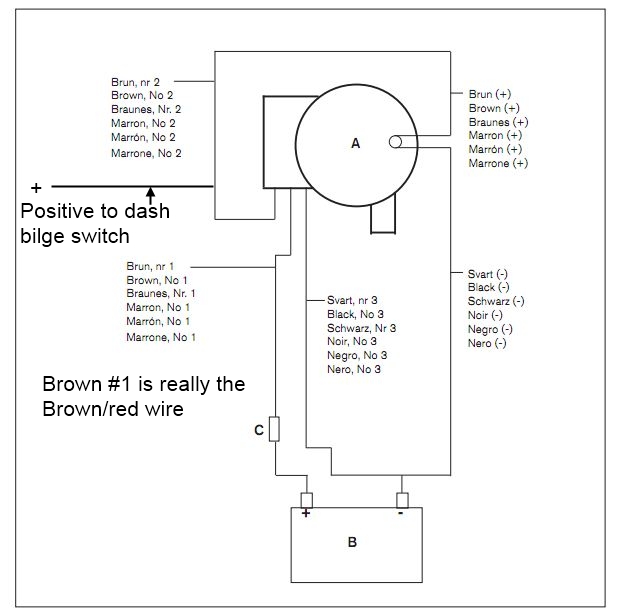Keep Your Boat Afloat: The Ultimate Guide to Bilge Pumps
Imagine this: you're out on the open water, enjoying a perfect day of boating, when suddenly you notice water accumulating in the bottom of your boat. Panic sets in. This is precisely why a functioning boat bilge pump system is not just important – it's absolutely crucial. A bilge pump is your vessel's first line of defense against sinking, a small but mighty piece of equipment that can save your boat, your trip, and potentially even your life.
But what exactly is a marine bilge pump, and why is it so essential? Simply put, a bilge pump is a water pump designed to remove unwanted water that collects in the bilge, the lowest compartment of a boat's hull. This water can come from various sources: rain, waves splashing over the sides, leaks, or even condensation. Without a bilge pump to remove this water, your boat could become unstable and eventually sink.
The history of the bilge pump parallels the history of boating itself. As soon as humans started venturing out onto the water in vessels, they realized the need to remove accumulating water. Early bilge pumps were manual devices, often simple scoops or buckets. With the advent of engine-powered boats, mechanical bilge pumps became the norm, offering a much more efficient way to keep the bilge dry. Today's bilge pumps range from simple manual pumps to sophisticated automatic systems with float switches that activate the pump when water levels rise.
The importance of a properly functioning bilge pumping system cannot be overstated. It's not an exaggeration to say that it's as crucial as having life jackets on board. A failed bilge pump can quickly lead to disaster, especially in rough seas or if a significant leak develops. Regular inspection and maintenance of your boat's bilge pump is essential to ensure it's always ready to perform its vital function.
One of the most common issues with boat bilge pump systems is clogged intake screens or hoses. Debris such as leaves, sand, and small pieces of plastic can easily block the flow of water, rendering the pump ineffective. Regular cleaning of the intake screen is crucial to prevent this problem. Other potential issues include faulty wiring, a malfunctioning float switch, or a worn-out impeller. Understanding how your bilge pump operates and performing routine checks can help you identify and address these issues before they become serious problems.
Three key benefits of having a bilge pump system on your boat are: safety, peace of mind, and preservation of your vessel. Safety is paramount; a bilge pump protects you and your passengers from the dangers of a sinking boat. Peace of mind comes from knowing that you have a reliable system in place to deal with unwanted water. Finally, a bilge pump helps preserve your boat by preventing water damage to the hull and other components.
Advantages and Disadvantages of Different Bilge Pump Types
| Type | Advantages | Disadvantages |
|---|---|---|
| Manual | Simple, inexpensive, no power required | Slow, requires physical effort |
| Automatic | Convenient, automatic activation | Can fail if float switch malfunctions |
Best Practices for Bilge Pump Maintenance:
1. Regularly inspect and clean the intake screen.
2. Test the pump regularly to ensure it's functioning correctly.
3. Check the wiring and connections for corrosion or damage.
4. Inspect the float switch for proper operation.
5. Consider installing a high-water alarm for added safety.
Frequently Asked Questions:
1. How often should I test my bilge pump? Answer: At least once a month.
2. What size bilge pump do I need for my boat? Answer: This depends on the size of your boat. Consult a marine professional for guidance.
3. What type of bilge pump is best? Answer: It depends on your specific needs and budget. Automatic pumps are convenient, but manual pumps are a good backup option.
4. How do I clean my bilge pump intake screen? Answer: Remove the screen and clean it with fresh water.
5. What should I do if my bilge pump isn't working? Answer: Check the fuse, wiring, and float switch. If you can't identify the problem, consult a marine mechanic.
6. Can I install a bilge pump myself? Answer: While possible, it's recommended to have a qualified marine technician install your bilge pump.
7. How do I know if my float switch is malfunctioning? Answer: The pump may not activate when water is present, or it may run continuously even when the bilge is dry.
8. What is a high-water alarm? Answer: An alarm that sounds when water levels in the bilge reach a critical level.
Tips and Tricks:
Carry a spare fuse for your bilge pump.
Consider installing a second bilge pump as a backup.
In conclusion, a bilge pump is an indispensable piece of equipment for any boat owner. From ensuring the safety of your passengers to protecting your investment, a functioning bilge pump provides numerous benefits. By understanding the importance of regular maintenance, troubleshooting common problems, and following best practices, you can keep your boat afloat and enjoy worry-free boating for years to come. Don’t delay, inspect your bilge pump system today, and ensure you have the right setup for your vessel. Your safety and peace of mind are worth it.
Unlocking financial futures the power of malone universitys finance faculty
Unlocking the power of font styles a comprehensive guide
Decoding the skull emoji more than meets the eye













